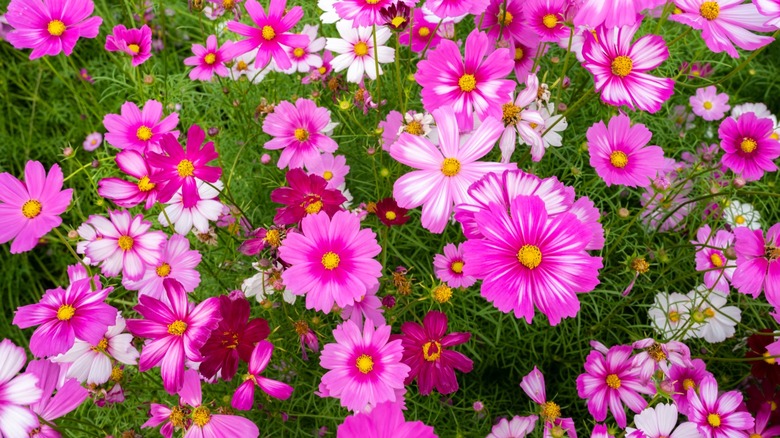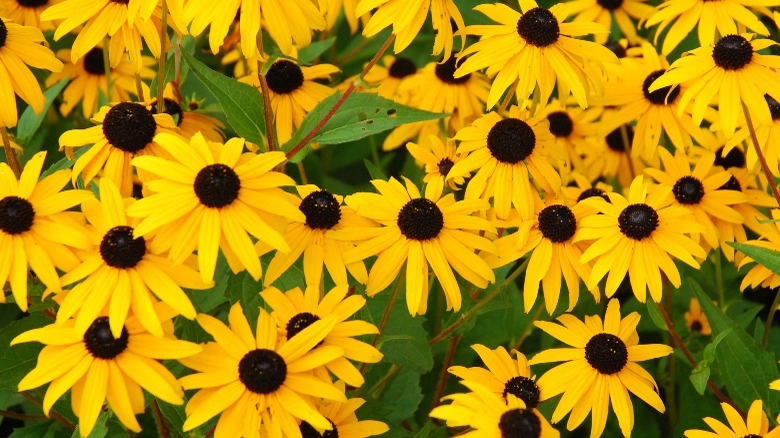Stunning Cosmos Flower Alternatives That Won't Take Over Your Garden
With their daisy-like petals that produce tall, showy flowers, cosmos are available in shades of pink, purple, and white, making them especially popular. If you're looking for fabulous additions to flowering gardens with gorgeous colors, cosmos flowers (Cosmos bipinnatus) are for you — with one caveat. Unfortunately, cosmos are also considered invasive in areas like West Virginia due to their reseeding habits. If allowed to spread unchecked, they will spread like wildflowers and compete with native plants for resources like food, water, and sunlight, often stunting or even choking out the growth of smaller native plants.
If you're looking for stunning cosmos flower alternatives that won't take over your garden, the following annuals are a great choice if you want to change your garden plan each year. Zinnias (Zinnia elegans) are colorful with bright, full blooms in a wide variety of colors and are easy to grow from seed. Coreopsis, or tickseed (Coreopsis spp.), has pretty yellow and orange blooms and is another easy-to-grow flower. Marigolds (Tagetes spp.), with their variety of colors and patterns ranging from single colors to striped, not only offer brilliant displays but are also known for repelling pests and tend to be deer-resistant — just be sure to avoid these common marigold mistakes. If you want to grow perennials, choose black-eyed Susans (Rudbeckia hirta), which are easy to spot with their dark, almost black centers and brilliant yellow petals. Dahlias (Dahlia spp.) are bushy petaled flowers that can be grown as both annuals and perennials, depending on your climate (although they can be toxic to pets). Asters (Aster spp.) and snapdragons (Antirrhinum majus) also offer abundant blooms in various colors and showstopping heights.
Care requirements for cosmos flower alternatives
The alternatives for cosmos flowers have various requirements to ensure they produce gorgeous, healthy blooms. All do best when deadheaded to encourage abundant, full blooms and a prepared garden bed with planting after the danger of frost has passed. Zinnias love full sun (6-8 hours direct sun daily), well-drained soil, regular fertilizing, and regular watering. Coreopsis thrive in full sun, need little fertilizing, and can grow in a variety of soils. They prefer drier conditions so water them infrequently. Marigolds are another sun-lover but can tolerate partial shade. They need well-drained, fertile soil and regular watering. The black-eyed Susan thrives in full sun but is another flower that can tolerate partial shade, and it's even deer-resistant. This perennial needs well-drained soil and regular watering.
Dahlias in your flower bed require a sunny location that has well-draining soil. They are dependent on regular watering to survive. Asters are happiest with full sun to partial shade in well-draining, fertile soil. They require regular watering as well. Lastly, snapdragons thrive in full sun but are also shade-tolerant. They need well-draining soil and occasional fertilization. All of these alternatives to cosmos flowers are non-invasive, allowing you to create a balanced, well-managed flower garden.

